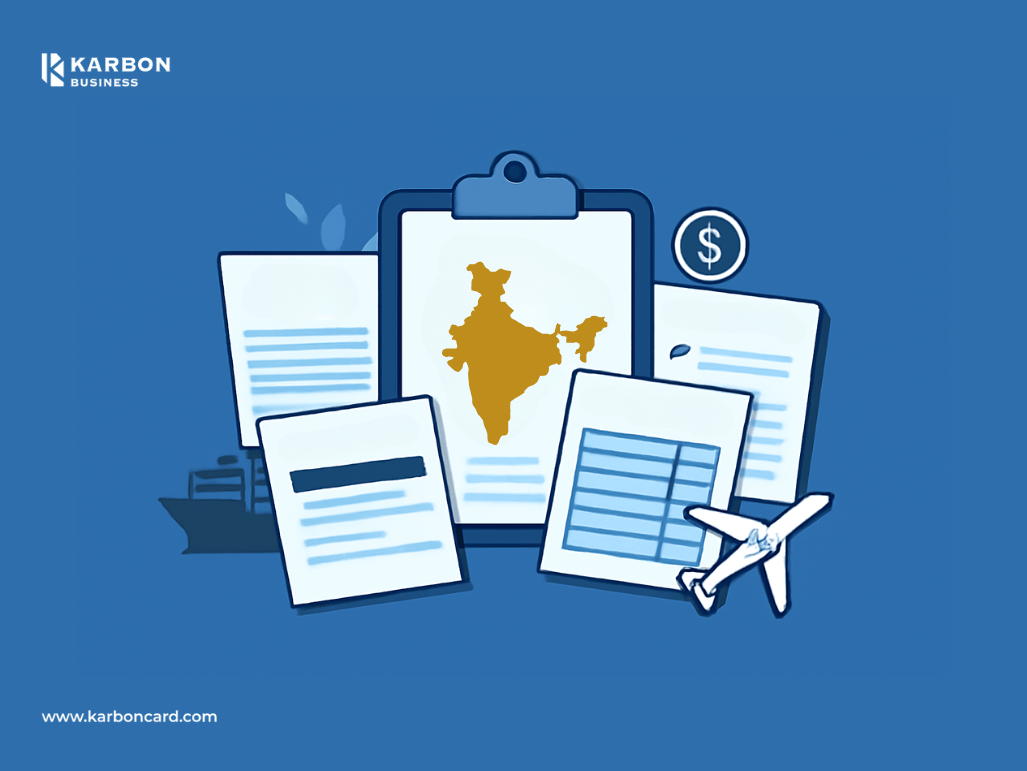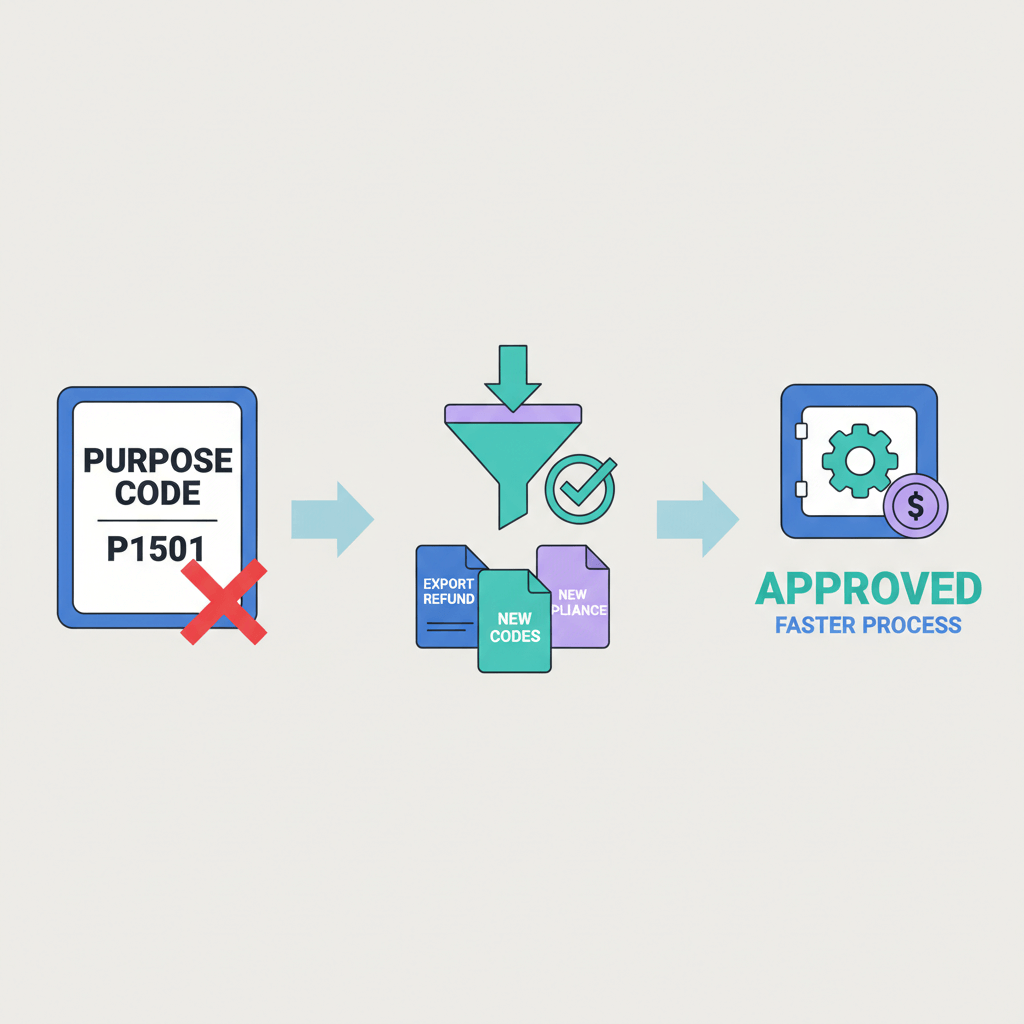Each step of the export process from India requires specific documentation. Miss even one, and you could face payment delays, customs hiccups, or shipments blockages.
Apart from the headache—it can cost you time, money, and a whole lot of stress.
In this blog, we’re making it easy. We’ll walk you through the must-have document that can come handy as a simple documents of export checklist.
Export Documents List
When you're ready to start exporting, it's essential to know what export documents are required to ensure smooth processing and compliance.
To make it easier, we've broken down the entire list of 17 documents into 6 key categories, which align with different process of exporting.
By organizing them this way, you'll have a clear roadmap of exactly what needs to be done at each step.
1. Core Registration & Compliance Export Documents
Importer Exporter Code (IEC)
An IEC is often the first official step for any exporter. It connects your business to customs and international banking networks. Many buyers check if you hold a valid IEC before placing an order.
Without an IEC, even the best products cannot leave India legally. Banks use your IEC to record inward foreign payments. Updating your IEC regularly avoids compliance trouble.
Registration-cum-Membership Certificate (RCMC)
Getting an RCMC shows that you belong to an approved Export Promotion Council. Many product-specific benefits come only if you have this registration. It’s valid for a fixed period and must be renewed on time.
Some councils offer help like trade fairs or buyer meets. An active RCMC also signals credibility when you work with overseas buyers. It helps you unlock special tariff benefits under trade agreements.
2. Commercial & Pre-Shipment Export Documents
Proforma Invoice
A proforma invoice acts like a handshake before a formal deal. It gives your buyer clarity on pricing, quantity, and timelines. Buyers often use it to apply for import licenses at their end.
The document helps both parties record clear trade terms from day one. It may get revised if your buyer negotiates changes. Always keep a signed copy for future reference.
Commercial Invoice
The commercial invoice is the backbone of your export paperwork. It becomes proof of the actual transaction value. Customs abroad rely on it to check duties and taxes.
Include precise product details and HS codes to match your shipping bill. Any mismatch can delay clearance overseas. Keep copies in your records for audits.
Here's the complete guide to difference between Proforma and commercial invoice.
Packing List
A detailed packing list saves you trouble at ports. It describes how your cargo is arranged inside containers or boxes. Freight forwarders and insurers use it for claims if cargo is lost or damaged.
It helps customs scan goods without opening every unit. Always match the packing list to your invoice to avoid confusion. Any discrepancy can cause hold-ups at loading docks.
Purchase Order / Export Order
A signed purchase order locks in the deal’s terms. It usually matches your proforma invoice, with agreed prices and delivery dates. The PO also becomes a reference in payment disputes.
Buyers share it to confirm exact product specs and conditions. Always check for correct billing and shipping details. Keep it safe for resolving any contract disagreements.
3. Shipping & Customs Clearance Export Documents
Shipping Bill
The shipping bill is your green signal to export legally from India. You or your CHA files it online via ICEGATE with supporting documents. Customs officers verify your cargo matches your invoice and packing list.
You must file the right shipping bill type, like duty drawback or free shipping bill. Keep a digital copy for GST refunds later. Errors here can delay customs clearance.
Bill of Lading (BL)
The Bill of Lading is your proof of handover to the shipping line. It also serves as a contract that your cargo will be delivered as agreed. Some buyers require the original BL before making final payment.
Always double-check that all shipment details match your invoice and packing list. Losing an original BL can lead to major delays. Keep a copy for your bank too.
Air Waybill (AWB)
Air shipments use an AWB instead of a BL. Unlike a BL, an AWB is non-negotiable and can’t be transferred to another buyer. It still serves as proof that your cargo is in safe transit.
Make sure the AWB details match your other documents exactly. Airlines use it for tracking and customs checks. Keep your copies ready in case any airport checks happen.
Let Export Order (LEO)
A Let Export Order confirms final approval from customs to load goods on the vessel or flight. After customs check documents, the LEO closes the export clearance loop.
Without it, the carrier will not load your cargo. Save a copy as proof of compliance for GST refund claims. Make sure all corrections are done before applying for LEO.
4. Inspection, Quality & Origin Certificates Export Documents
Certificate of Origin (COO)
A COO proves your product’s place of manufacture. Many countries give lower import duties for goods from India under trade pacts. Always check if the destination needs a specific format.
Chambers of Commerce check your documents before issuing a COO. Keep multiple signed copies for customs abroad. Attach it to your invoice when you dispatch goods.
Inspection or Pre-shipment Certificate
Buyers sometimes hire third-party inspectors to check quality. An inspection certificate shows that your cargo meets technical specs or safety standards. This protects you from claims about defective goods.
You can book approved agencies like EIC for this. It’s best to do it well before shipping. Keep an extra copy to handle disputes if quality is questioned later.
Phytosanitary & Fumigation Certificates
These certificates prove your goods are pest-free and safe for human or animal use. They are mandatory for agri goods, seeds, wood or plants. Countries with strict biosecurity demand them at entry ports.
India’s Plant Quarantine authorities inspect and seal shipments before giving the certificate. Keep it ready to show local customs abroad. Delays can happen if pests are detected at destination.
5. Payment & Bank-Related Export Documents
Letter of Credit (LC)
A Letter of Credit secures your payment even if the buyer defaults. The buyer’s bank promises payment if you submit all documents correctly. This reduces non-payment risk in new markets.
LC terms must match your shipping documents exactly. Any mistake can delay payment release. Always check the expiry date and conditions.
Bill of Exchange
A Bill of Exchange is like a cheque you draw on your buyer. It tells the buyer to pay a set amount by a due date. It’s used in documentary collection along with BL or AWB.
Once the buyer accepts it, they must honour it on maturity. It is useful when trading on credit terms. Keep a signed copy for any legal dispute.
Bank Realisation Certificate (BRC)
A BRC shows that your export payment came through official banking channels. It is needed to close the export transaction with RBI. Without it, your export is not legally complete.
You need it to claim GST refunds or duty drawbacks. Banks issue it once they receive the full amount. Keep your BRCs for at least five years.
6. Insurance & Marine Cover Export Document
Marine Insurance Policy
Marine insurance protects your cargo against damage or loss during transit. Many buyers request a copy before shipment. Without it, claims for losses are nearly impossible.
Get the policy before dispatch, confirming coverage matches your goods’ value. Share a copy with the buyer if shipping under CIF terms.
FAQs
Do I need an IEC to start exporting?
Yes, the Importer Exporter Code (IEC) is mandatory for all exporters. Without it, your shipments can’t clear customs or be processed by banks.
What is the difference between a proforma invoice and a commercial invoice?
A proforma invoice is a preliminary document that outlines pricing and terms before an order is confirmed. A commercial invoice, on the other hand, is the final bill used for customs clearance and tax purposes once the order is processed.
What is a Letter of Credit, and do I need one?
A Letter of Credit (LC) is a payment guarantee issued by the buyer’s bank. It ensures you get paid as long as you provide the correct documentation. It’s especially useful when dealing with new buyers or larger transactions.
How do I get a Certificate of Origin?
The Certificate of Origin (COO) is issued by a Chamber of Commerce or an Export Promotion Council. It proves that the product was manufactured in India and is often required to benefit from lower customs duties in foreign markets.
What happens if I forget one of these documents?
Forgetting essential export documents like the shipping bill or commercial invoice can lead to shipment delays, customs clearance problems, and potential payment disputes. It’s crucial to double-check everything before shipping.










